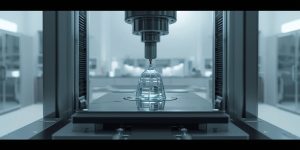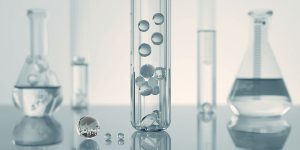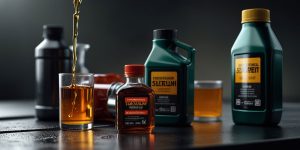Polyethylene terephthalate (PET), a member of the polyester family, is one of the most widely produced and recycled plastics in the world. Known for its strength, clarity, and recyclability, PET is used extensively in packaging, textiles, automotive parts, and electronics. Its exceptional balance of mechanical, thermal, and chemical properties makes it a go-to material across various industries. This article by SiNDA Oil offers a comprehensive overview of PET—from its chemical structure and manufacturing process to its properties, applications, and environmental considerations.
What is Polyethylene Terephthalate (PET)?
PET is a semi-crystalline thermoplastic polyester derived from terephthalic acid (or its dimethyl ester) and ethylene glycol. The polymer consists of repeating units of (C₁₀H₈O₄) and can exist in either amorphous (clear) or semi-crystalline (opaque/white) forms, depending on its thermal and processing history. As a general-purpose polymer, PET ranks fourth in global production volume after polyethylene (PE), polypropylene (PP), and polyvinyl chloride (PVC).
Chemical Structure and Composition
PET is a linear polymer formed through polycondensation, where monomers like terephthalic acid and ethylene glycol react—producing water or methanol as a byproduct. It can also be synthesized using dimethyl terephthalate (DMT).
The molecular structure features ester linkages, which provide high tensile strength and thermal stability. According to ASTM D3418, PET exhibits a melting peak between 225°C and 255°C when scanned at a rate of 10°C/min.
Manufacturing Process
There are two major synthesis routes for PET:
- Esterification of terephthalic acid with ethylene glycol.
- Transesterification of dimethyl terephthalate (DMT) with ethylene glycol.
After these initial reactions, polycondensation follows to build long polymer chains. The product is obtained as a molten mass, which can be extruded, molded, or spun into fibers.
An alternative source of PET is mechanical or chemical recycling of post-consumer PET products, which reverts the polymer back to its monomeric form.
Properties of PET
Physical & Mechanical Properties
- Young’s Modulus: 2800–3100 MPa
- Tensile Strength: 55–75 MPa
- Elastic Limit: 50–150%
- Impact Resistance (Notch Test): 3.6 kJ/m²
Thermal Properties
- Glass Transition Temperature (Tg): 67–81°C
- Melting Point: 240–270°C
- Vicat Softening Point: 82°C
- Thermal Expansion Coefficient: 7×10⁻⁵ K⁻¹
Chemical Properties
- Excellent resistance to alcohol, aliphatic hydrocarbons, oils, and diluted acids.
- Moderate resistance to diluted alkalis, aromatic, and halogenated hydrocarbons.
- PET is biologically inert and non-toxic.
Other Notable Features
- High transparency and gloss
- Shatter-resistant
- Good gas barrier (oxygen and carbon dioxide)
- Microwave transparent
- FDA and EFSA approved for food contact
- Low water absorption (~0.16%)
PET vs. Other Polymers
PET vs. PBT
- PET offers higher stiffness and transparency
- PBT crystallizes faster and has better moldability
- PET is more suitable for applications demanding clarity and strength
PET vs. HDPE
- PET is clear, HDPE is opaque
- PET is less prone to stress cracking
- HDPE is slightly more temperature resistant
- PET has better sustainability and recycling rate
PET vs. PVC
- PET is more recyclable and chemically inert
- PVC recycling is challenging due to chlorine content
- PET is safer for food contact and doesn’t degrade in UV exposure
PET vs. PC (Polycarbonate) and Acrylic
- PET has better stress resistance and chemical durability
- Acrylic is UV resistant, but PET is tougher
- PC has impact strength, but poorer chemical resistance
Processing Techniques
- Injection Molding
- Requires drying to <0.05% moisture
- Barrel temperature: 240–290°C
- Mold temperature: 140–160°C for crystalline forms
- Used for precision components like connectors, housings, etc.
- Extrusion
- Temperature: 270–290°C
- Produces films, sheets, and thermoformed packaging
- Blow Molding
- Ideal for bottles and containers
- Stretch and extrusion blow molding used in beverages, pharmaceuticals, cleaning products
- 3D Printing
- PET and PETG filaments offer:
- High strength
- Smooth finish
- Low shrinkage
- Recommended temperature: 240–260°C
- Suitable for rapid prototyping and functional parts
PET Grades and Modifications
- PETG (Glycol-Modified PET): Better elongation and lower melting point, suitable for printing and forming.
- Glass Fiber-Reinforced PET: Enhances mechanical properties for automotive and industrial parts.
- Additives: CNTs, nucleating agents, and flame retardants improve thermal and impact resistance.
Applications
- Packaging
- Water bottles
- Carbonated soft drink containers
- Microwaveable trays
- Rigid cosmetic jars
- Textiles
- Polyester fabrics (lightweight, durable)
- Mesh filters
- Agricultural braces
- Belts and technical textiles
- Automotive & Electronics
- Engine covers
- Solenoids
- Smart meters
- Connector housing
- Films
- Optical films
- Packaging films
- Scuff-resistant and durable layers
Blending PET with Other Polymers
PET can be blended with:
- Thermoplastics: PP, PE, PC
- Thermosets: Epoxy, phenolics
- Rubbers: SBR, NBR
Benefits of blending include:
- Improved impact strength
- Better thermal stability
- Enhanced processability
- Reduced costs and warpage
Recycling and Sustainability
rPET (Recycled PET)
- Identified by recycling code ♳ (1)
- Methods:
- Mechanical recycling
- Chemical recycling (hydrolysis)
- rPET used in:
- Food and non-food containers
- Automotive carpets
- Fleece jackets and tote bags
- Films and straps
Environmental Benefits
- PET is biologically inert
- Resistant to microbial attack and UV degradation
- Low landfill impact due to compressibility
Safety and Toxicity
According to ILIS and multiple safety studies:
- PET is non-toxic, non-genotoxic, and safe for food contact.
- No adverse effects from ingestion, dermal exposure, or inhalation.
- Heat-treated rPET is safe for direct food contact.
Conclusion
Polyethylene terephthalate (PET) stands as a versatile, high-performance, and sustainable polymer. From its mechanical strength to transparency and recyclability, PET fulfills a wide range of industrial needs. Whether used in packaging, textiles, automotive, or electronics, its adaptability and environmental benefits ensure that PET remains at the forefront of material innovation. As technology advances and recycling improves, PET’s role in a circular economy will only become more crucial.











